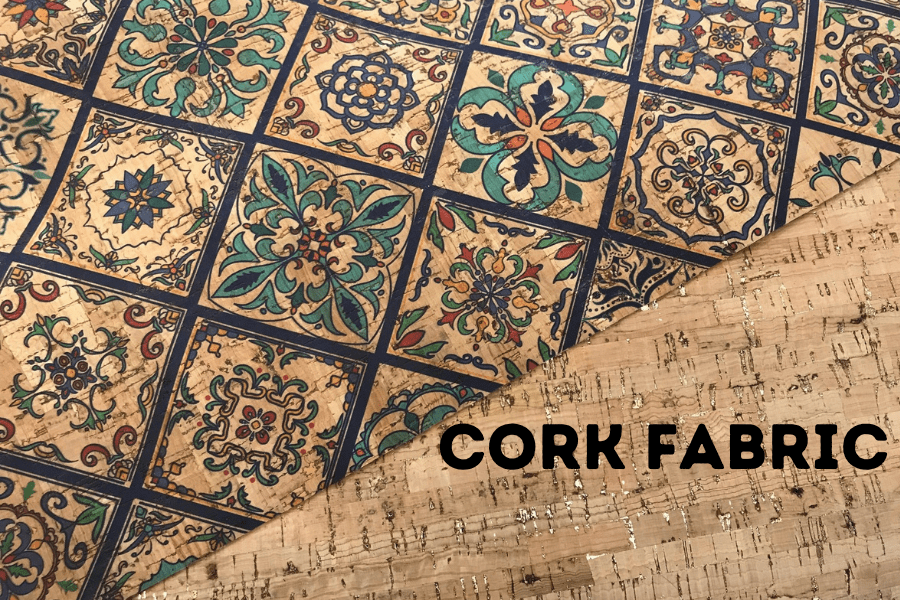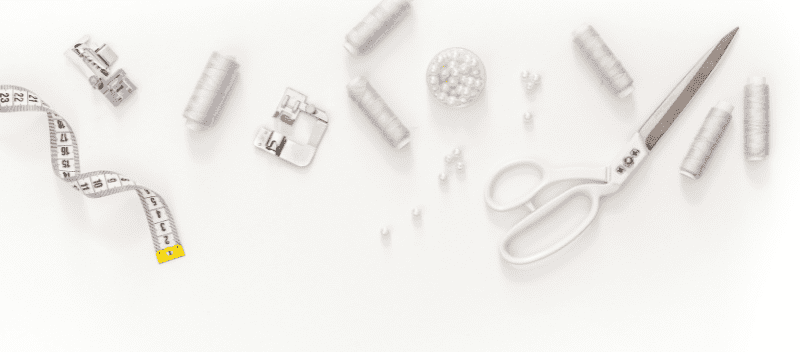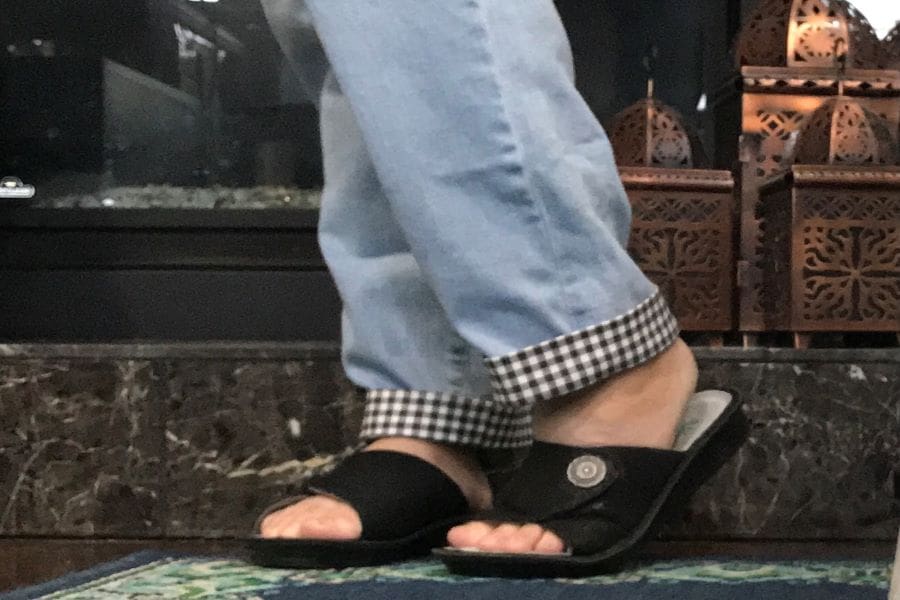How to Quickly & Easily Make Plant Identification Stakes with Chalkboard Fabric< 1 hour

Easily Make Plant Identification Stakes with Chalkboard Fabric in less than 1 Hour
In this easy garden sewing project, I share a simple sewing tutorial for creating beautiful plant identification stakes that are not only beautiful, but functional. These charming stakes look great in flowerpot shower favors or grouped together for the gardener in your life! It’s easy to personalize your flowerpot plant identification stakes when you use chalkboard fabric. When using these plant identification stakes outdoors, make sure to select an outdoor fabric that will withstand sun and rain. If using them indoors, consider using quilting cotton and adding additional decorations like sequin butterflies or flowers to add a pop of glitter.

Plant Identification Stakes Required Materials:
For (1) plant identification stake you will need:
(3) 4” wide x 3” tall fabric rectangles
(1) chalkboard fabric rectangle 2 ¼” wide by 1 ¼” tall
(1) 12” bamboo/wooden skewer stick per plant ID
1 sm. Spool of general utility thread
Fabric glue stick (optional)
Hot glue (optional)
NOTE: You need a small amount of chalkboard fabric to create the plant ID tags. Most retailers sell this fabric by the yard. I am selling a limited quantity of (12) chalkboard fabric squares for $7.99 which includes first class postage within the lower 48 states of the United States. No international shipping at this time. If interested, please email info@thecreativesewist.com with your request. Thank you!
Tools Needed for Making Plant Identification Stakes:
Sewing machine
Iron
Hot Glue gun (optional)
NOTE:
Before using the chalkboard fabric, you will need to ‘prime’ it. To do this, rub a piece of common chalk over it. Rub horizontally first, then vertically. Be sure to cover the entire surface. Next, wipe clean with a damp cloth. Your chalkboard fabric is ready to use! To wash the chalkboard fabric, simply use a warm soapy sponge and dry with a soft cloth. You can ‘prime’ your fabric before cutting it out and sewing it in place. This will save time and protect your fabric from the priming process.
Plant Identification Stakes Step 1: Select Fabrics
Select your fabric and cut out 3 fabric rectangles that measure 4″ wide by 3″ tall.
Plant Identification Stakes Step 2: Marking the Opening
Select 2 of the fabric rectangles and lay them right sides together. On the WRONG SIDE of one of the pieces, identify the CENTER point by measuring in 2” from left to right. Draw a line with your disappearing ink marker. Then measure down from top 1 ½” and draw a line. (See photo)

Left: I selected (2) of my fabric rectangles. The top piece will be the front, the lower piece will not be visible when finished. On the right: I identified the center of my rectangle and marked it on the wrong side of the fabric before placing the two pieces right sides together.
Now draw a line ½” above and below the horizontal center line. Then draw a line 1” to the left and right of the vertical center line.

Plant Identification Stakes Step 3: Sew a rectangle
These lines will form a box. Using a straight stitch, sew along the box line. Backstitch when you begin and end your line of stitching.


Plant Identification Stakes Step 4: Seam Grading
Cut out the center of the box. Trim the seam to 1/8” away from the stitch line. At the corners, snip toward the inner point. Be very careful to NOT cut thru the stitching line!

Plant Identification Stakes Step 5: Pressing
Lift one layer and push it thru the opening to the back. Press the inner seam.



Plant Identification Stakes Step 6: Adding Chalkboard Fabric
Look at your fabric and decide which side will be the ‘right’ side and which will be the ‘wrong side’. Apply a small amount of fabric glue stick along the opening on the WRONG SIDE of your opening. Be careful to only apply the glue along the edges of the frame window. Do not apply more than 1/4″ width of glue along the opening. Remember: This will be the ‘back’ side of the frame.

Now position your fabric frame face down with the glue side facing up toward the chalkboard fabric. Finger press in place.


Plant Identification Stakes Step 7: Topstitching
Top stitch 1/8” from edge of center box.

If there is any excess chalkboard fabric on wrong side, trim to a 1/8” from topstitching.

Plant Identification Stakes Step 8: Adding the Back
Lay final rectangle of fabric, RIGHT SIDE facing chalkboard fabric. Sew a ¼” seam allowance along the edges. Leave an opening along the center bottom approximately 1’- 1 ¼” long.

Plant Identification Stakes Step 9: Trimming
Trim edges along SEWN sides and turn right sides out thru opening.

Plant Identification Stakes Step 10: Press seams flat
Press the seams flat and make sure that you have a 1/4″ seam allowance at the opening.

Plant Identification Stakes Step 11: Adding Stick and Closing Opening
Locate bottom center of rectangle. Insert the bamboo/wooden stick until it touches the top upper seam. Hold the stick in place along the top edge and CAREFULLY place a small drop of hot glue on the INSIDE between the stick and the back side of the fabric along the lower edge. Allow glue to cool. You can omit the hot glue if you don’t feel comfortable using a glue gun. Just be sure to secure the stick in place by wrapping your thread around it tightly while sewing the opening closed.

Plant Identification Stakes Step 12: Closing the Opening
Carefully hand-stitch opening closed. Hide your knots on the inside.

That’s it! Wasn’t that simple? Hopefully you enjoyed this easy sewing tutorial and will find ways to beautify your flower and vegetable pots.

If you have any questions, please leave them in the comments below.
If you enjoyed this easy sewing tutorial and would like to learn more decorating tips including how to make a simple basket, check out THIS BLOG POST next.
Please note: This article does contain affiliate links.
We are a participant in the Amazon Services LLC Associates Program and its affiliate advertising programs which are designed to provide a means for us to earn fees by linking to Amazon.com and its affiliated sites.
There is no additional cost to you when you make a purchase through any of my affiliate links. Please consider supporting this blog.
CHRISTINE WARREN
Sewing isn’t just my job, it’s my passion. I’ve enjoyed sewing and needle working since I was very young.












